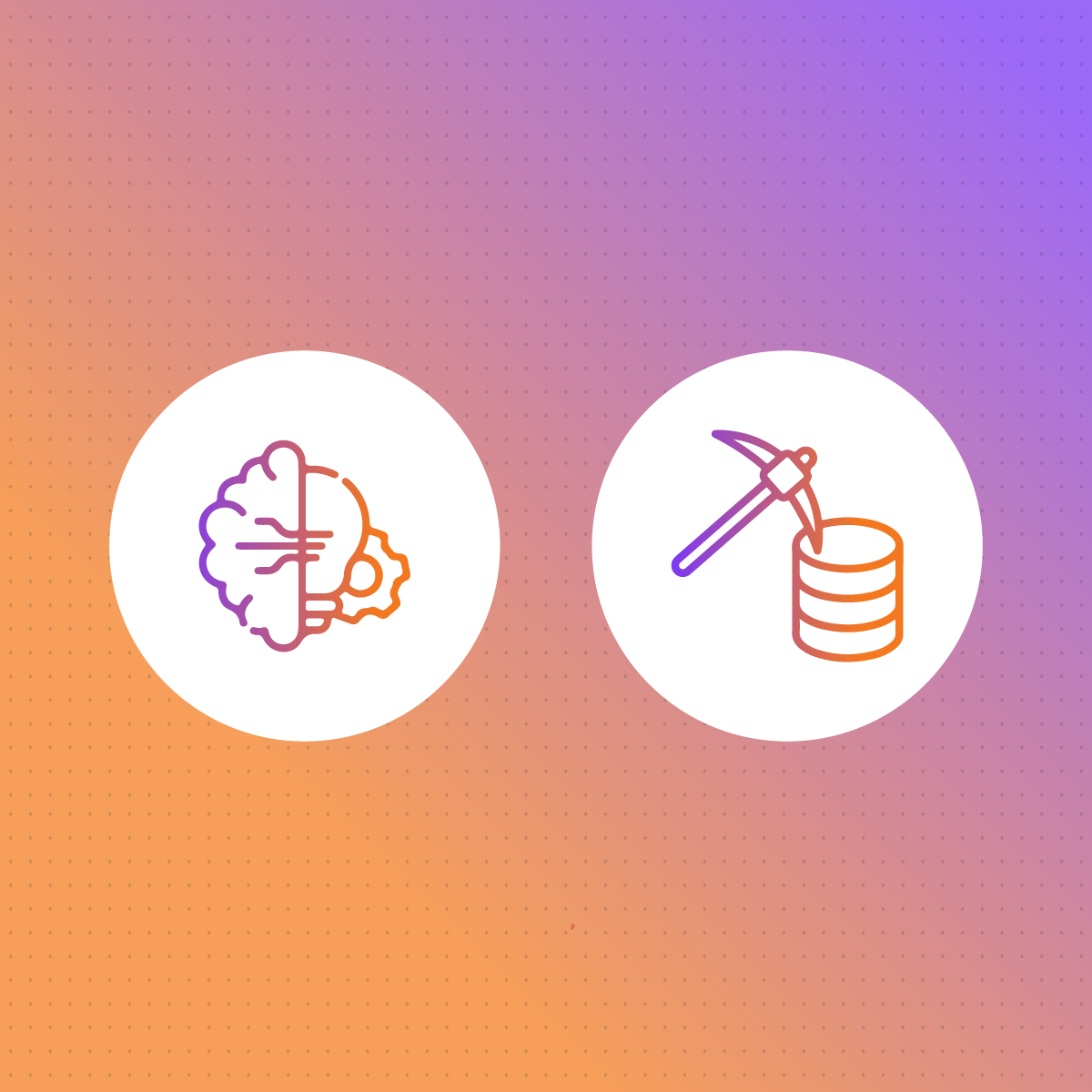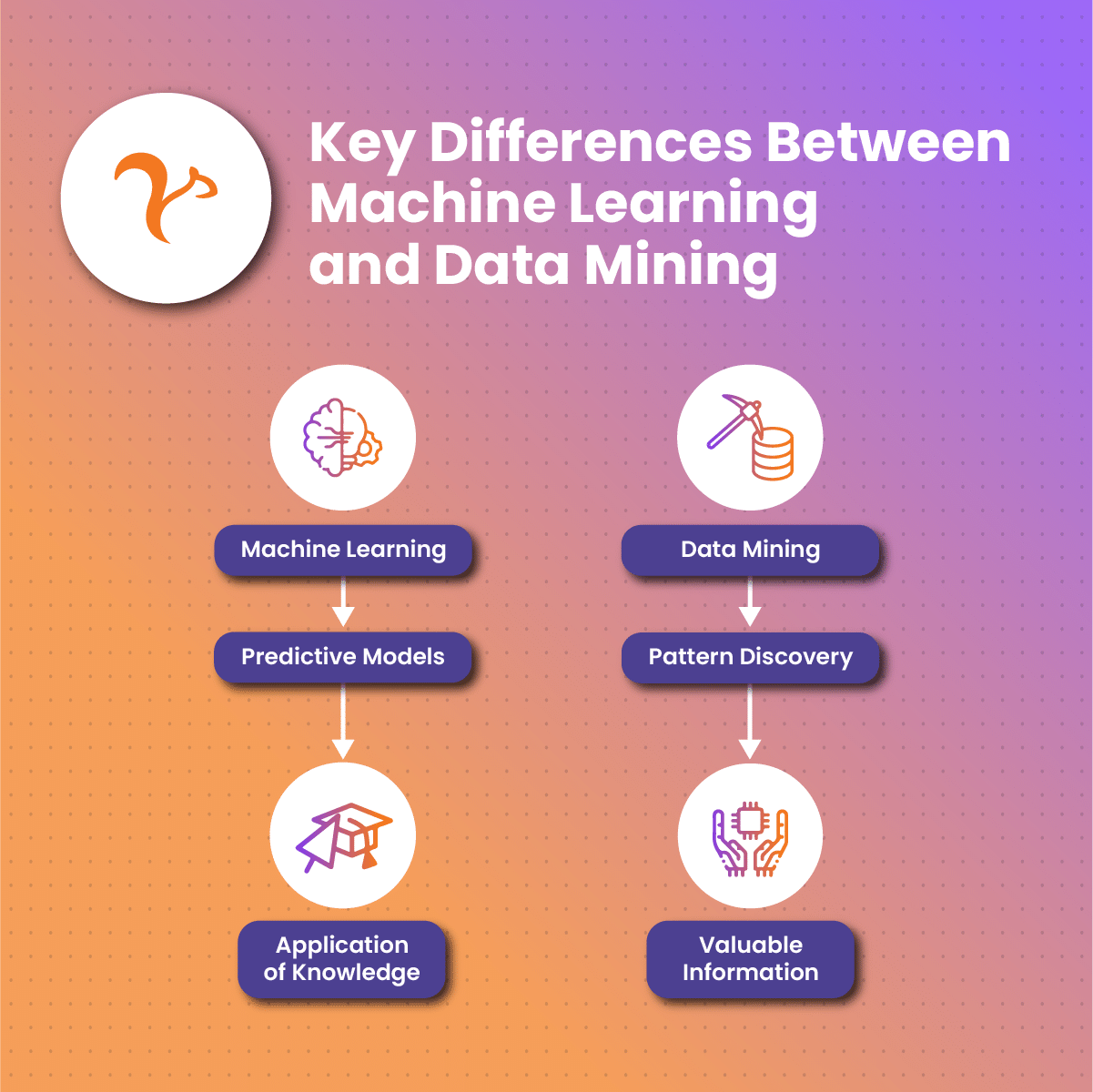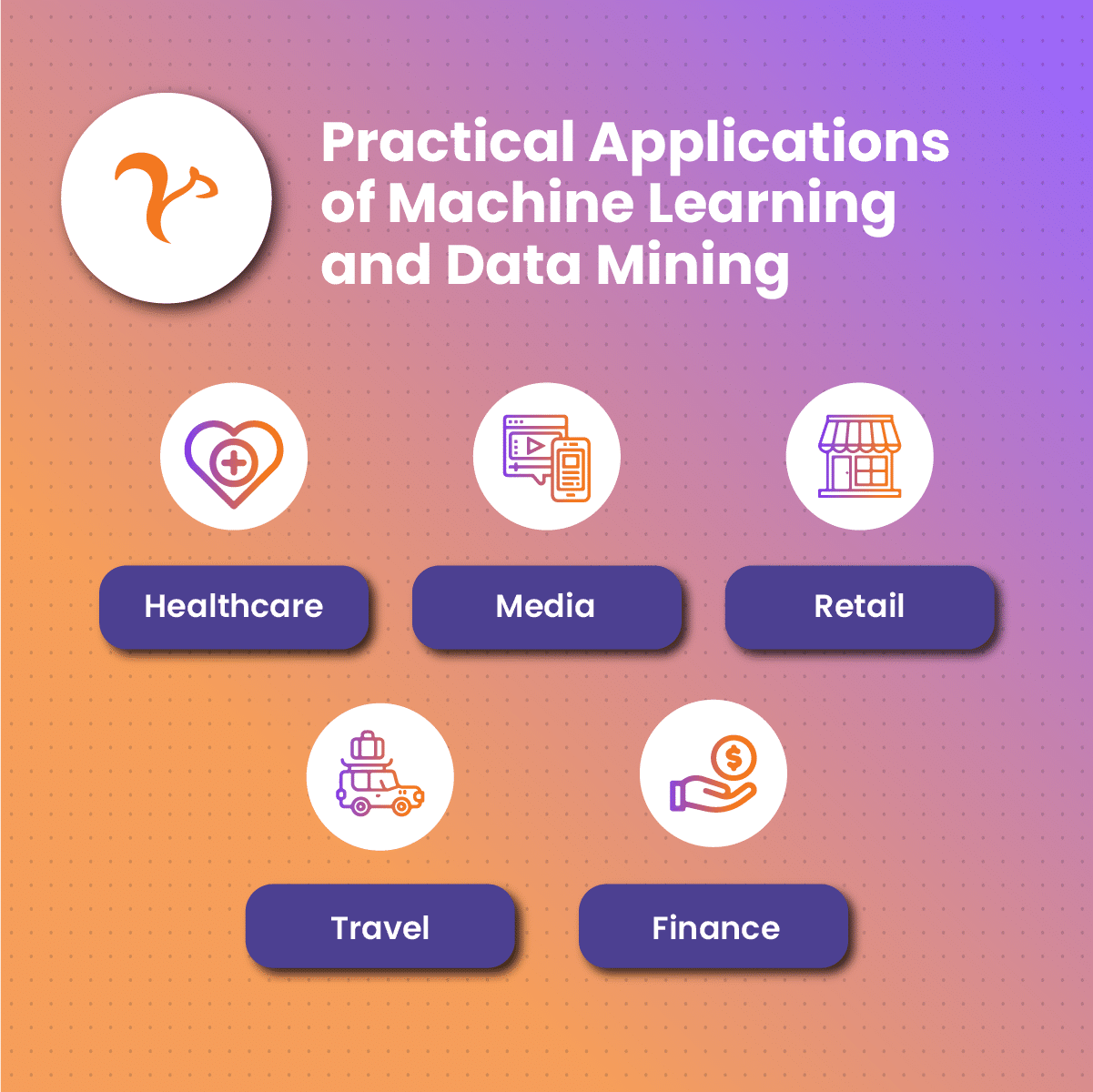Machine learning and data mining are key components in the modern data analysis landscape, enabling businesses and researchers to derive insights from vast datasets. While machine learning focuses on building models that learn and make predictions, data mining involves extracting useful patterns from raw data. Together, they empower decision-making across industries like healthcare, finance, marketing, and technology by identifying trends, automating processes, and optimizing outcomes. Understanding how these two fields work and their benefits is essential for leveraging their full potential in data-driven environments.
Discover and understand the distinct differences between machine learning and data mining, their applications, and their benefits in this detailed guide.
Understanding Machine Learning vs Data Mining

What Is Machine Learning?
Machine learning is a subset of artificial intelligence (AI) that enables systems to automatically learn from data and improve their performance over time without being explicitly programmed. By using algorithms that identify patterns and relationships in datasets, machine learning models can make predictions or decisions based on new input data. There are several types of machine learning, including supervised learning, where models are trained on labeled data, unsupervised learning, which deals with unlabeled data, and reinforcement learning, where models learn by interacting with an environment to maximize outcomes.
Machine learning is widely used in various applications such as image recognition, natural language processing, predictive analytics, and autonomous vehicles. Its ability to continuously learn and adapt makes it an essential tool in automating complex tasks, enhancing user experiences, and solving real-world problems.
Machine learning data mining practices often start with an understanding of machine learning. Machine learning is a subset of artificial intelligence that provides systems the ability to automatically learn and improve from experience without being explicitly programmed. The learning process is based on the ingestion and analysis of data to create models that can predict outcomes or recognize patterns.
The Role of Algorithms in Machine Learning
Algorithms are at the heart of machine learning. They provide instructions that allow the machine to learn from data. Machine learning algorithms can be categorized into supervised learning, where the algorithm learns from labeled data, and unsupervised learning, where the algorithm identifies patterns in unlabeled data.
Supervised Learning and Unsupervised Learning: What’s the Difference?
Supervised learning uses labeled data to train the machine. This means that the desired output is known and the algorithm learns by comparing its predictions with the actual outcome. In contrast, unsupervised learning uses unlabeled data. Here, the algorithm learns by identifying patterns and structures in the data without any reference to known outcomes.
Real-world Examples of Machine Learning Applications
Machine learning applications are widespread and diverse. In healthcare, machine learning can predict disease progression based on patient data. In finance, machine learning algorithms are used for credit scoring and risk assessment. In the technology sector, machine learning powers recommendation systems in platforms like Netflix and Amazon.
Benefits of Machine Learning
Machine learning offers several benefits, making it indispensable across industries. First, it enables automation by allowing systems to learn from data and improve without manual intervention. This is particularly valuable in industries like finance, healthcare, and retail, where it can optimize processes such as fraud detection, patient diagnosis, and inventory management. Machine learning models also improve accuracy over time as they process more data, which leads to better predictions and outcomes.
Additionally, machine learning provides scalability, allowing organizations to handle and analyze massive datasets efficiently. Its ability to uncover complex patterns and relationships within data helps businesses personalize customer experiences, reduce operational costs, and make data-driven decisions, all of which enhance competitiveness in the market.
What Is Data Mining?
Data mining, on the other hand, is the process of discovering patterns and knowledge from large amounts of data. The data sources can include databases, data warehouses, the internet, and other information repositories. The process involves the extraction of interesting and potentially useful patterns from vast data stores.
Data mining is the process of discovering patterns, correlations, and trends in large datasets through statistical and computational techniques. It involves extracting meaningful information from raw data to support decision-making, identify opportunities, or solve problems. Data mining typically includes stages such as data cleaning, feature selection, pattern recognition, and evaluation. By applying algorithms to datasets, data mining reveals hidden relationships that can be used for forecasting, clustering, classification, and anomaly detection.
Data mining is commonly used in industries like finance, healthcare, marketing, and e-commerce to detect fraud, predict customer behavior, optimize marketing campaigns, and more. It helps organizations make informed decisions by turning vast amounts of data into actionable insights.
The Five Tasks of Data Mining: Classification, Regression, Clustering, Association, Anomaly Detection
Data mining involves five main tasks: classification, regression, clustering, association, and anomaly detection. Classification sorts data into predefined categories. Regression predicts numeric outcomes. Clustering groups similar data points together. Association identifies rules that describe data dependencies, and anomaly detection identifies outliers in the data.
The Process and Techniques Involved in Data Mining
Data mining starts with the collection of data from various sources. The data is then cleaned and transformed into a format suitable for mining. The mining phase involves the application of various statistical techniques to extract patterns from the data. These patterns are then interpreted and evaluated for their potential utility.
Real-world Examples of Data Mining Applications
Data mining is used extensively in retail for market basket analysis, which helps retailers understand purchasing behaviors. It’s used in finance to detect fraudulent transactions, and in healthcare, it can help predict disease outbreaks based on historical data.
Benefits of Data Mining
Data mining delivers significant benefits by turning raw data into meaningful insights. It helps organizations identify trends and patterns that might not be immediately obvious, enabling better forecasting and decision-making. For example, businesses can use data mining to understand customer preferences, optimize pricing strategies, and identify emerging market trends. This empowers companies to stay ahead of competitors by making proactive adjustments to their products or services.
Data mining also enhances efficiency by automating the analysis of large datasets, saving time and resources compared to manual data processing. It improves data-driven decision-making by providing actionable insights that drive innovation, increase operational efficiency, and boost profitability. Additionally, data mining techniques are essential in detecting anomalies and irregularities, such as fraud detection in financial institutions or detecting defects in manufacturing processes.
Key Differences Between Machine Learning vs Data Mining
Machine learning data mining processes may seem similar, but they have distinct differences. The primary difference lies in their objectives and the techniques used. Machine learning aims to make predictions or decisions based on past data. It learns from historical data to make these predictions. On the other hand, data mining is about discovering unknown properties in the data. It extracts hidden patterns and information from a dataset without focusing on future predictions. The techniques used in machine learning are often about learning and improving from experience, while data mining uses mathematical and statistical techniques to extract and identify patterns in the data.
The difference in Objectives: Prediction vs. Discovery
Machine Learning’s Objective: Prediction
Machine learning data mining often highlights the primary objective of machine learning: prediction. Machine learning seeks to develop models capable of making accurate predictions or decisions based on previous data. These models are designed to learn from past experiences and adapt their predictions over time as more data becomes available.
Data Mining’s Objective: Discovery
In contrast, the primary objective of data mining is discovery. Data mining aims to uncover unknown properties and hidden patterns within large data sets. It focuses on extracting valuable and actionable insights from data without necessarily making future predictions.
The difference in Techniques: Learning vs. Extraction
Machine Learning Techniques: Learning
Machine learning techniques largely involve learning from past data. The algorithms learn patterns and make predictions based on these patterns. The learning can be supervised, where the algorithm learns from a labeled dataset, or unsupervised, where the algorithm finds patterns in an unlabeled dataset.
Data Mining Techniques: Extraction
Data mining techniques, on the other hand, focus more on the extraction of information. These techniques use statistical and mathematical methods to identify patterns, relationships, and trends within large data sets. The extraction process is aimed at discovering new, previously unknown information from the data.
The Difference in Data Usage: Training and Testing vs. Large-scale Analysis
Machine Learning’s Data Usage: Training and Testing
In machine learning, data is primarily used for training and testing. The training data is used to train the machine learning model, while the testing data is used to evaluate the model’s performance. This process helps ensure the accuracy and reliability of the machine learning model’s predictions.
Data Mining’s Data Usage: Large-scale Analysis
Conversely, data mining involves large-scale analysis of data. It doesn’t typically divide data into training and testing sets. Instead, data mining analyzes the entire dataset to extract patterns and insights. It aims to gain a comprehensive understanding of the underlying structures and relationships within the data.
How Machine Learning and Data Mining Complement Each Other
Role of Data Mining in Machine Learning: Data Preprocessing and Feature Extraction
Data mining plays a crucial role in machine learning data mining processes by aiding in data preprocessing and feature extraction. It helps clean, transform, and normalize data, preparing it for use in machine learning algorithms. It also aids in the extraction of important features from the data, which can significantly enhance the performance of machine learning models.
Role of Machine Learning in Data Mining: Predictive Modelling and Anomaly Detection
Similarly, machine learning aids in predictive modeling and anomaly detection in data mining. Machine learning algorithms can be used to build models that predict future trends based on past data, enhancing the predictive capabilities of data mining. They can also help detect anomalies in data, alerting analysts to potential issues or opportunities for further investigation.
Practical Use Cases of Machine Learning and Data Mining
Applications in Finance: Credit Scoring and Fraud Detection
Both machine learning and data mining find extensive applications in the finance sector. Machine learning models are often used for credit scoring, helping lenders predict the likelihood of default based on past financial behavior. Similarly, data mining techniques can help detect fraudulent transactions by identifying unusual patterns in transaction data.
Applications in Marketing: Customer Segmentation and Market Basket Analysis
In marketing, machine learning can help with customer segmentation, dividing customers into groups based on their behavior and preferences. This enables more targeted and effective marketing strategies. Data mining, on the other hand, can assist with market basket analysis, identifying patterns in purchase behavior to inform product placement and promotional strategies.
Applications in Healthcare: Disease Prediction and Medical Imaging Analysis
Machine learning and data mining also have significant applications in healthcare. Machine learning models can predict the likelihood of disease based on a patient’s medical history and lifestyle factors. This helps healthcare providers identify at-risk individuals and intervene early. Data mining, meanwhile, can analyze complex medical imaging data to assist with diagnosis and treatment planning.
Current Trends and Future Directions in Machine Learning and Data Mining
The Rise of Deep Learning: A Specialized Form of Machine Learning
Deep learning, a specialized form of machine learning, is emerging as a powerful tool in data analysis. Deep learning algorithms use artificial neural networks to learn complex patterns in large amounts of data. This approach is becoming increasingly popular in fields such as natural language processing, image recognition, and even in machine learning data mining applications.
The Emergence of Big Data: Challenges and Opportunities for Data Mining
With the rise of big data, data mining faces both new challenges and opportunities. The sheer volume and complexity of big data can make traditional data mining techniques inadequate. However, it also provides a rich source of information for extracting valuable insights. Novel data mining techniques are being developed to handle big data, enabling more in-depth and accurate analysis.
The Intersection of Machine Learning and Data Mining in AI Development
Machine learning and data mining are both integral to the development of artificial intelligence (AI). Machine learning provides the predictive capabilities needed for AI systems, while data mining provides the insights needed to guide AI decision-making. The intersection of these fields is leading to the development of more intelligent and autonomous AI systems, promising significant advancements in technology and society at large.
Advantages and Disadvantages of Machine Learning Data Mining
Advantages of Machine Learning Data Mining
- Predictive Capabilities: Machine learning algorithms can learn from past data to predict future trends and outcomes, enabling proactive decision-making in various fields, including finance, healthcare, and marketing.
- Automated Learning: Machine learning algorithms can independently learn and improve from experience without being explicitly programmed, reducing the need for human intervention.
- Handling Complex Datasets: Machine learning algorithms are capable of processing large and complex datasets, extracting meaningful insights that might be difficult or impossible for humans to identify.
- Personalization: Machine learning algorithms can provide personalized recommendations and decisions based on individual user behavior and preferences.
Disadvantages of Machine Learning Data Mining
- Data Dependence: The performance of machine learning algorithms heavily depends on the quality of the input data. If the data is biased or incomplete, it may result in inaccurate or misleading predictions.
- Overfitting: Overfitting is a common problem in machine learning where a model learns the training data too well, to the point that it performs poorly on unseen data.
- Interpretability Issues: Machine learning models, especially complex ones like neural networks, are often criticized as “black boxes” because their decision-making process can be difficult to understand.
- Computational Requirements: Machine learning algorithms, especially complex ones, can require significant computational resources and time to learn from data.
Here’s a comparison table summarizing these points:
| Advantages | Disadvantages | |
| Machine Learning Data Mining | Predictive capabilities, automated learning, handling complex datasets, personalization | Data dependence, overfitting, interpretability issues, computational requirements |
Resources
- Data Mining vs. Machine Learning | DiscoverDataScience.org – This article explains the differences between data mining and machine learning. It also provides examples of how these two concepts can be used together.
- Data Mining vs. Machine Learning: A Comparative Analysis – Springboard – This article provides a comparative analysis of data mining and machine learning. It explains the differences between these two concepts and provides examples of how they can be used.
- Data Mining vs. Machine Learning: What are the Top 9 Differences? – This article provides a detailed explanation of the top 9 differences between data mining and machine learning.
-
Data Mining vs. Machine Learning: Techniques, Applications, and Synergies: This article aims to explain the differences and similarities between the fields of data mining and machine learning.
-
Relationship between Data Mining and Machine Learning: This article explores the connection and interplay between the fields of data mining and machine learning.







